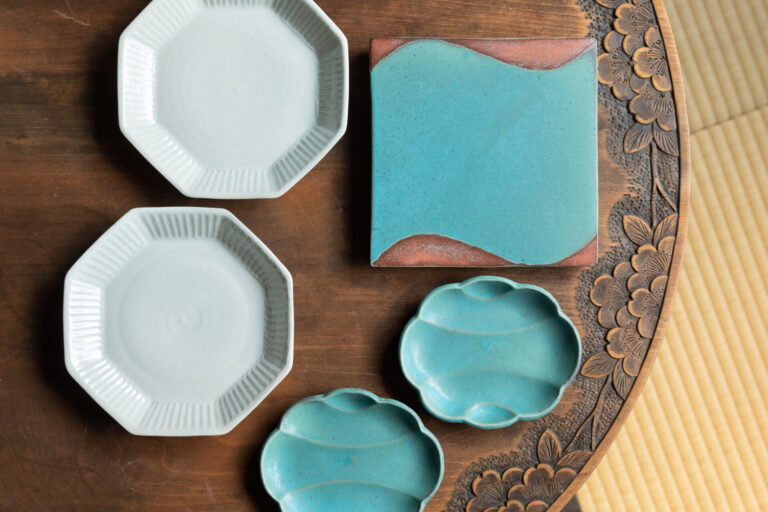
The blue colors of the Uoun Kiln by Taro Yamamoto / Utsu...
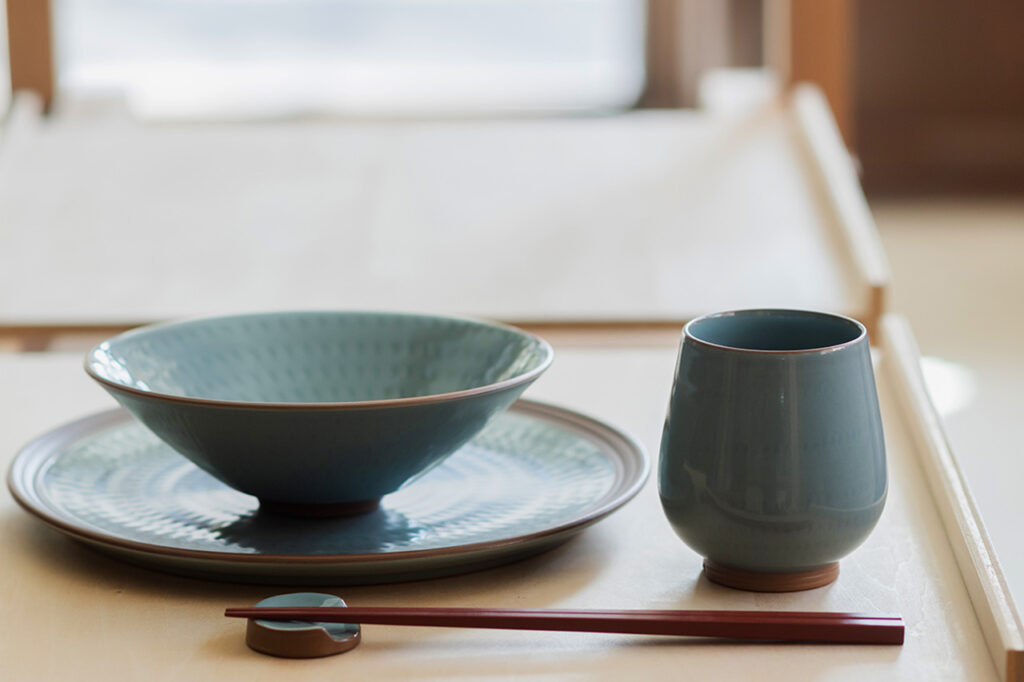

This month's issue spotlights Kyoto-based craftspeople and introduces their thoughts and works. This time, we introduce a couple of potters, Ms. Soharu and Ms. Madoka. Their pottery, born from their different backgrounds, tells a family story.
This is the studio and gallery of Soju Kiln, where fresh and gentle colors and modern designs are on display. Sozugama is an original brand established by a couple: Sozugi Wakuha, a fourth generation Kiyomizu-yaki potter, and Madoka, a native of Koishiwara-yaki potteries in Fukuoka.
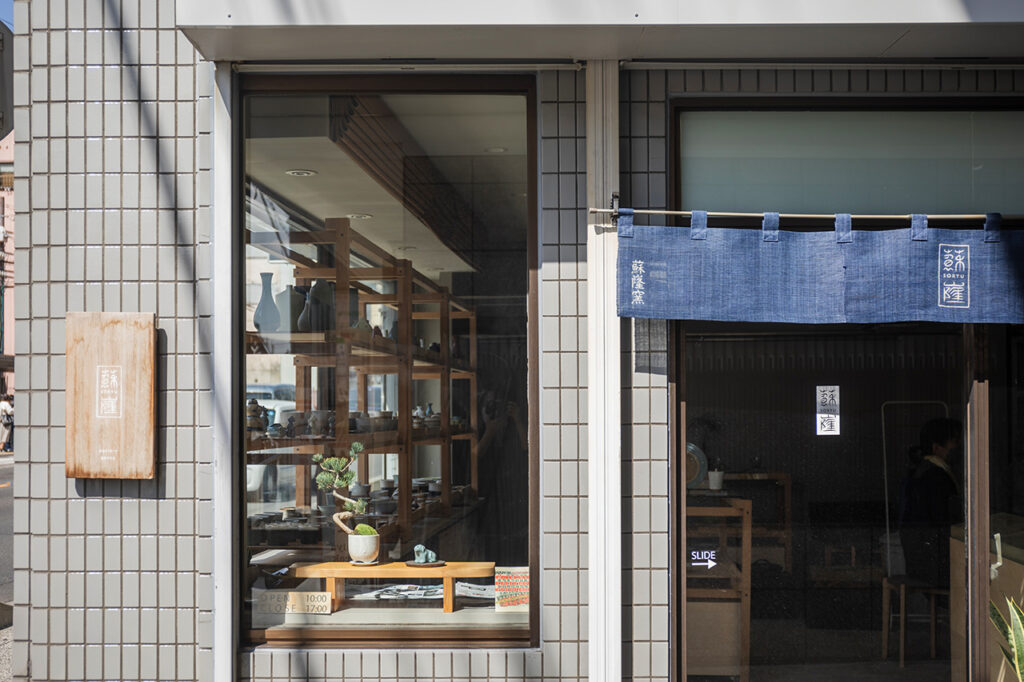

My grandfather, WAKUBA Sochin I, apprenticed himself to Mr. SUWA Suzan I, a leading figure in Kyoto ware celadon, and learned the art of celadon. From there, he was succeeded by his father and mother, and I took over as the fourth generation 17 years ago. I was very torn between following in his footsteps or not, but I was determined not to let the beautiful blue color of celadon die out, so after graduating from college, I began attending a pottery school," says Suh. It was at that school that he met Madoka.
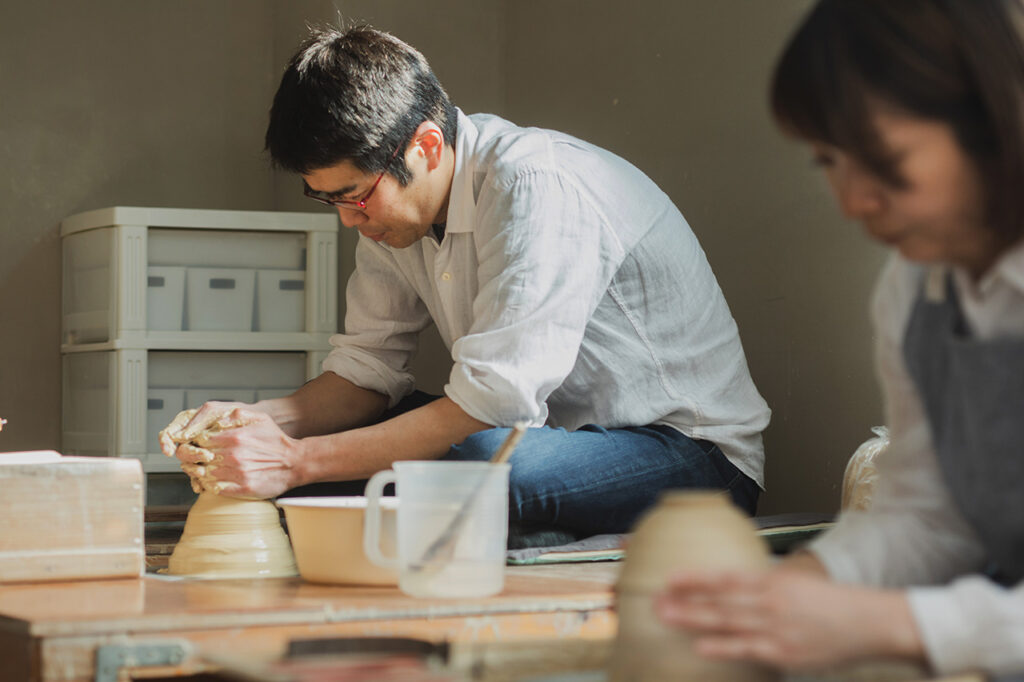
Born in Kyoto in 1977. After graduating from university, he studied ceramic molding and glazing at the Kyoto Prefectural College of Advanced Ceramic Technology, etc. In 2005, at the age of 28, he assumed the name of Wonnami Suyuan IV.

I was born into a fourteen-generation Koishiwara pottery family and had every intention of following in their footsteps. I went to school in Kyoto because I knew I would never leave Fukuoka," laughs Madoka.
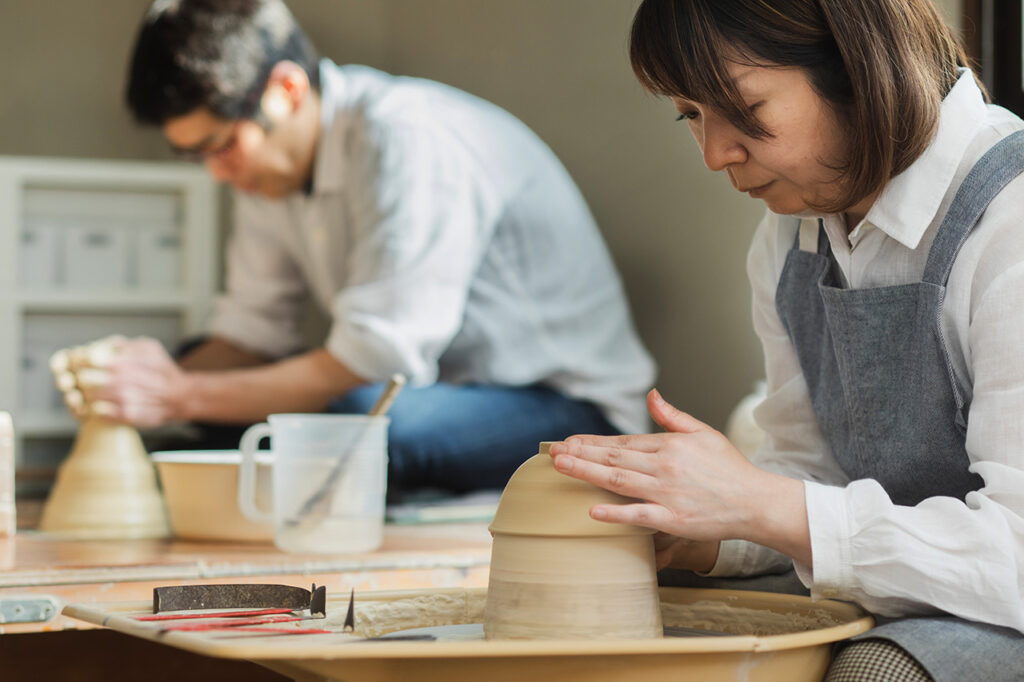
Madoka WAKUBA was born in Fukuoka in 1976. Her family has been making Koishiwara-yaki pottery for fourteen generations. She has specialized in ceramics since her college days and completed the ceramic molding and research course at the Kyoto Prefectural College of Advanced Ceramic Technology.

They married soon after graduating from school. Ms. Su Su worked on celadon porcelain, aiming for the beautiful blue color expressed by her grandfather, the first generation, and her works were mainly tea utensils. She said, "It was tough to make a living on that alone, so I had to take on part-time jobs as well. It was then that my son, who was in the early grades of elementary school at the time, expressed an interest in taking over as the fifth generation. I knew I had to make sure the baton was passed on properly, and my son's words turned me on," says Madoka.


From there, the couple decided to change their way of working with an eye to the future. Taking advantage of the fact that they both come from two different ceramic regions, Kiyomizu-yaki from Kyoto and Koishiwara-yaki from Koishiwara, they launched Sobugama, a brand that combines the skills of the two ceramic studios.

A series of vessels made by flying planing celadon fabric with a tool made from an old clock spring. The glaze collects in the grooves cut by the planer, and a pattern emerges in shades of blue. Celadon hi-kanna plate (24cm), finished with a rim wrapped with beni (clay), 16,500 yen. A celadon hibikanna cup made for wine glasses is 6,600 yen. Celadon hibikanna bowls that would be suitable for all kinds of Japanese and Western cuisine: 11,000 yen. Chopstick rests (set of 5), 11,000 yen, have a form and color that are easy to put chopsticks on, making them easy to incorporate into the dining table.

It was a challenge from the very beginning to find a way to present celadon, which is not usually associated with everyday use, as tableware. The deep blue color of celadon porcelain, which has been passed down from generation to generation, is expressed by a technique called "kneading celadon" in which pigment is mixed into the porcelain clay. We then combined this with the Koishiwara pottery technique of tobikanna to create a new type of vessel," says Soju.
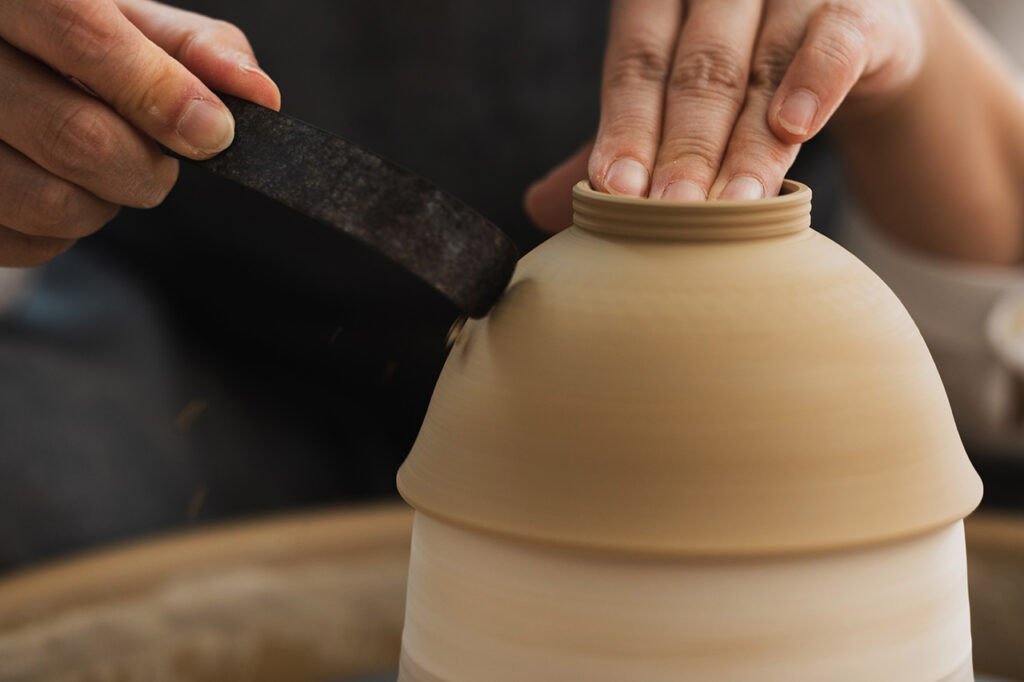

The hi-kanna, which uses the edge of a plane while turning a potter's wheel to make a series of grinding marks on the fabric, has a unique geometric pattern that gives celadon porcelain an expressive appearance. The combination of celadon porcelain, which has a noble image, and hibikanna, a technique of folk craft vessels, is found only here in Japan.
The two artists say that the new celadon vessels have a friendly atmosphere and have broadened the appeal of celadon.
This year marks seven years since the birth of Soju Kiln. Along with product development, the company has expanded the possibilities of pottery through a number of initiatives, including the development of overseas sales channels, the establishment of a ceramic jewelry division, and collaborations with other industries.
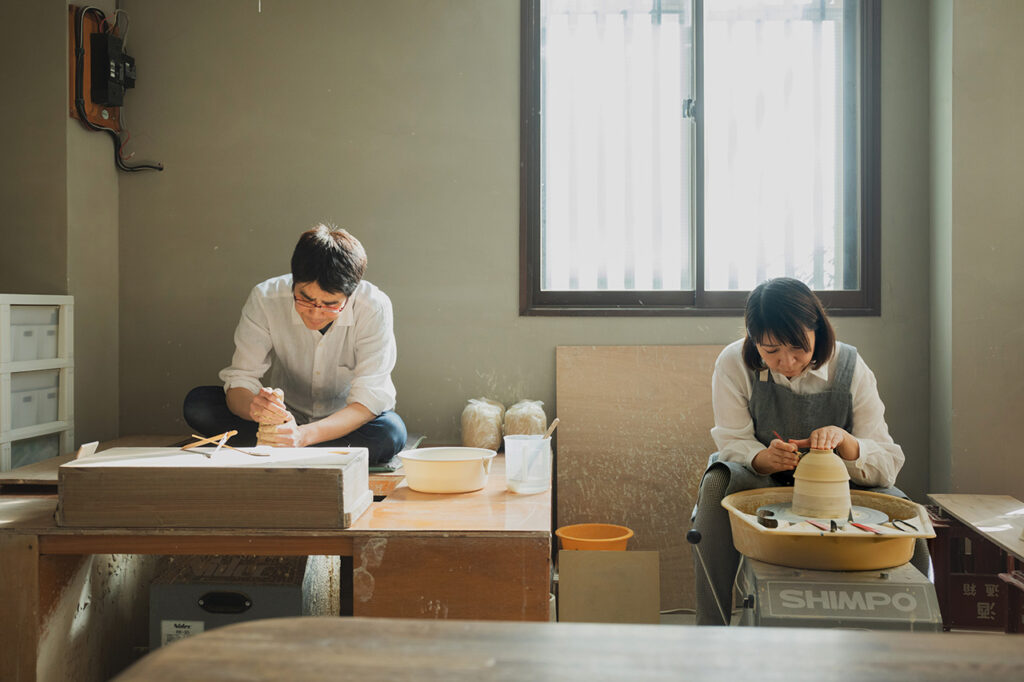

Four years ago, we renovated our studio to create a space where the studio and gallery coexist. We wanted to convey the background of our craftsmanship, so visitors can see how we actually make our products," says Madoka.
The two potter's wheels are made in the Kyoto style by Sohui, who sits cross-legged and turns the wheel with a right-handed rotation on one side, and in the Fukuoka style by Madoka, who sits on a chair and turns the wheel with a left-handed rotation on the other side. Along with the difference in technique, we would like to feel the story behind the vessels created by the two potteries.
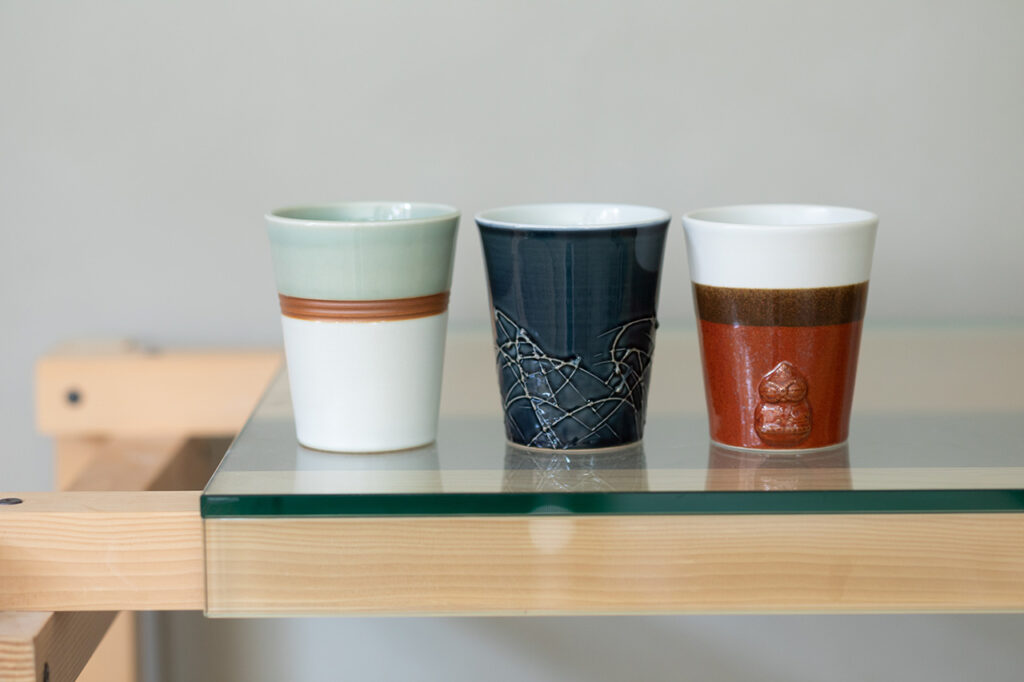
From left, a kakebun cup, 6600 yen, made of white porcelain fabric with a celadon glaze bordering a brown line pattern. The indigo glaze Ichikun cup, designed with delicate lines of movement using mud sho in a dropper, 6,600 yen. The Jomon cup, 8,800 yen, is inspired by a shakugi clay figurine lying in the ground before it was excavated.

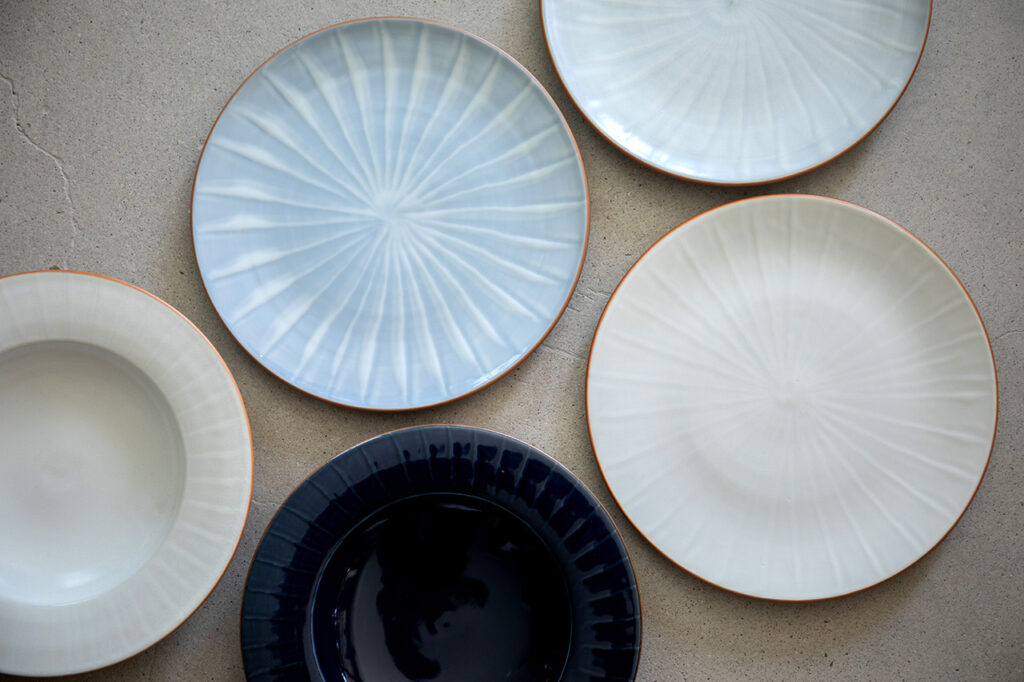
Hakeme plates, scheduled for full-scale release in the fall of 2022, are 16,500 yen each. Hakeme, a traditional technique of Koishiwara-yaki, is to create a pattern by brushing on decorative clay. This is the first attempt for porcelain, and following the Tobikanna series, it is a challenge to fuse Kyoyaki/Kiyomizuyaki and Koishiwara-yaki.

This is a brand created by two potters, Soke Wonami, the fourth generation of a Kiyomizu-yaki potter who specializes in celadon porcelain, and Madoka, who is from a Koishiwara-yaki potter's kiln in Fukuoka. They aim to create vessels that combine functionality and beauty by combining the techniques of the two potteries, such as "kneaded celadon" mixed with pigment and Koishiwara-yaki's hibikanna (plane) technique. His wide range of works, including the Jomon series featuring clay figures and other motifs, and ceramic jewelry, fascinate customers.
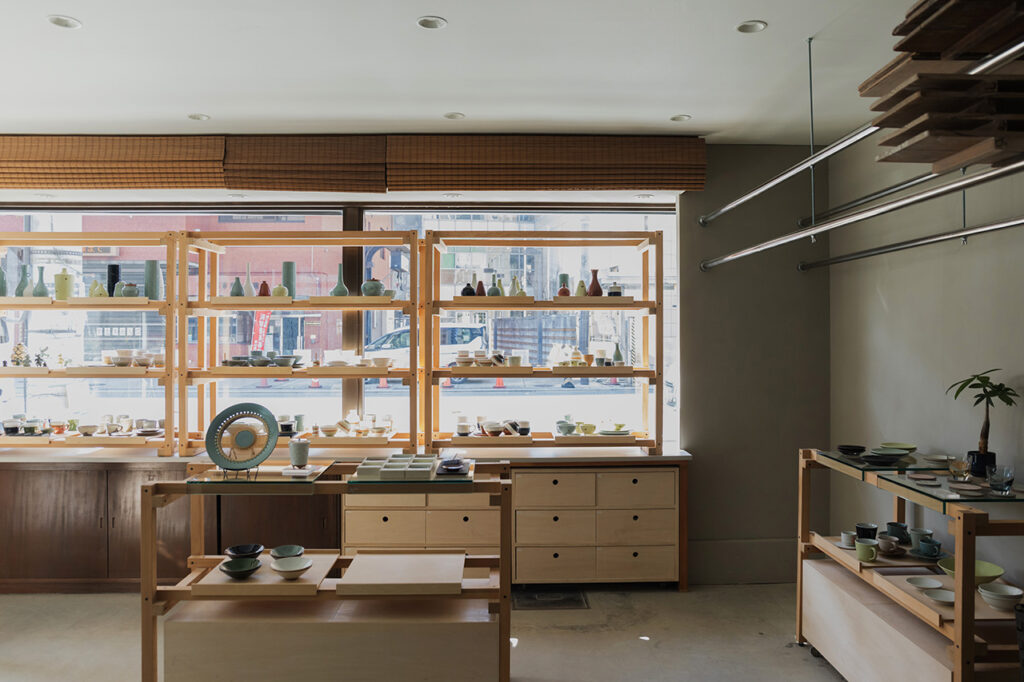

Over 600 interviews per year! An order site carefully selected by the editors who knows Kyoto and Shiga.
nowOfficial LINE friend registration500 yen OFF coupon is being issued!
Distributed every Friday morning at 8:00 am! From new restaurant information to event information that we want to share with you, We deliver articles about Kyoto that are useful to know. About 20,000 people have registered.Click here to add a friend!
 News
News Feature article
Feature article Featured event
Featured event